May 17, 2025 – Veterans of North Country Honor Flight #61
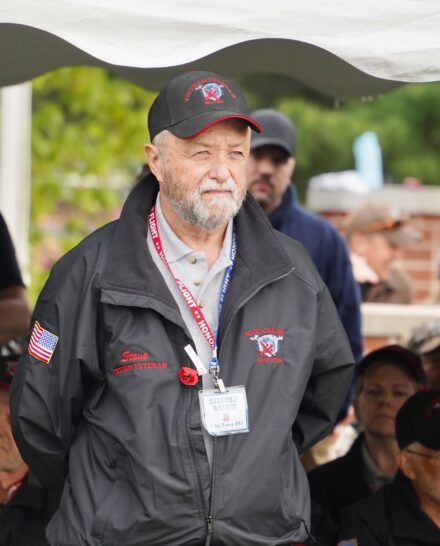 Steven “Steve” Bacon – US Air Force 1972-1999 Vietnam, Cold War
Steven “Steve” Bacon – US Air Force 1972-1999 Vietnam, Cold War
One year out of high school, and after numerous jobs, Steve was looking for career stability. He would enter the Burlington recruiter’s office, seeking a unique experience away from being a farm kid from Vermont. The Army recruiter wasn’t there that day, so Steve would join the Air Force after talking to their recruiter. This would take him to Lackland AFB for basic training, followed by Castle AFB for 5 months of training as a Boom Operator.
After AIT, Steven would have a brief assignment at Westover AFB for 4 months before receiving a 3-year assignment at Plattsburgh AFB. Having an excellent and encouraging mentor, Steve would go back to California as an instructor.
Steve’s 27 years of military service would lead him to a position as Aircraft Standardization and Flight Examiner, and In-flight Refueling Chief Enlisted Manager. His specialty would take him through a year of foreign service, an assignment to Offutt AFB, the Northeast SAC Headquarters, for their active status out of war plans, an 11-year return to Plattsburgh AFB, four years at Fairchild AFB, then finalizing his career at McGuire AFB.
His service would provide him with an abundance of training, strong mentors promoting and inspiring his service, a long list of commendations, as well as many close friends. He is most grateful to his wife, Lynn, for her commitment and dedication. His service is a partnership rooted in her support of 52 years.
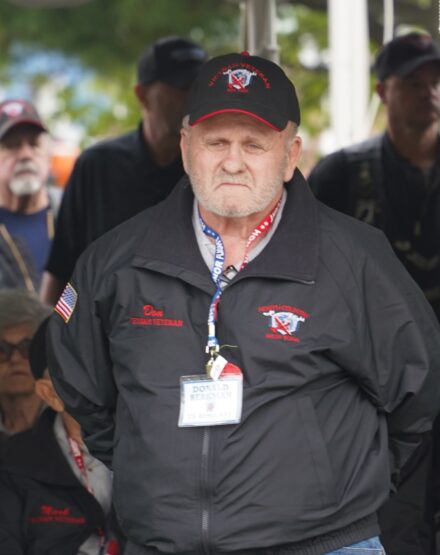 Donald “Don” Berkman – US Army 1968-1970 Vietnam
Donald “Don” Berkman – US Army 1968-1970 Vietnam
Don would be drafted into the US Army at age 19, leaving behind a job at Alcoa. A number of his friends would be called into service with him. He would report to basic training at Fort Dix, then receive 6-months AIT training at Fort Belvoir for an MOS as a Power Generator Equipment Operator.
After AIT, Don would receive his orders for Vietnam. He would arrive at Cam Ranh Bay by Chinook. On a deuce ½ Army truck with a big tent, that is where he would stay.
As his first task, Don would be given two small generators and told to wire them. Within 3 to 4 months, he had moved up to above-ground wiring of 15 KW to 50 KW generators. While on guard duty, he would be needed as generator power would shut down. After that, he would not be assigned guard duty, but would be on call for 24 hours.
On only one occasion, Don would get the assignment of “Poop Duty.” This duty involved the removal of poop-filled drums from the makeshift outhouse, stirring in diesel fuel, and setting them on fire. This was not a duty that anyone wanted to be assigned.
At Phu Bai, within 3 miles of the DMZ, Don would run for generator fuel. Held in tent posts, these fuel posts would continually move so they could avoid being bombed.
Don values his military experience, and sees the importance of service to this country by its citizens. He is making this trip today with his son-in-law, Jeff, a Marine Corps veteran.
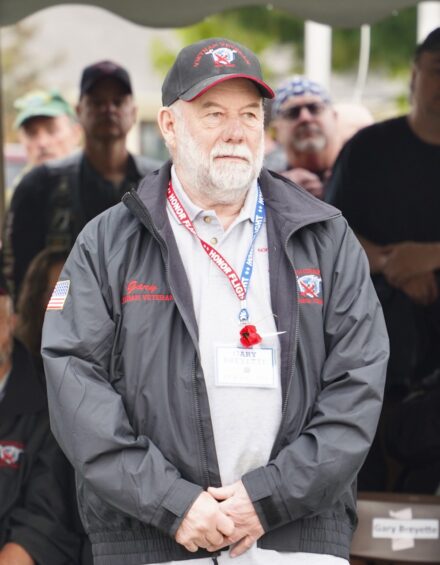 Gary Breyette – US Navy 1971-1975 Vietnam
Gary Breyette – US Navy 1971-1975 Vietnam
Gary’s father and brothers all served in various branches of the military. Receiving a low draft number, Gary enlists in the Navy. This choice allowed him to see the world from the Pacific to the Atlantic.
He would head out to basic training and AIT at Great Lakes Naval Base, spending 13 weeks in AIT as an Operational Specialist. With a home base in Mayport, Gary’s first two years would be assigned to the destroyer USS Lawe DD-763. While aboard the ship, they would provide gunfire and aircraft support off the coast of Vietnam.
Gary would also serve aboard the ammunition ship USS Suribachi. Here too he would find his ship off the coast of Vietnam providing arms and refueling to the combat units. He would travel to world ports, including Taiwan, Subic Bay in the Philippines, and Japan. While on leave in Taiwan, he would become lost, and his cab driver didn’t know where his ship was. Gary would finally return late to the ship. Glad to be back and facing disciplinary action, he was not quite as amused as his deck mates, who found great humor in his late return.
During his service, Gary missed the privacy of civilian life, but had tremendous appreciation for the mail call letters he received from home.
Click below to continue.
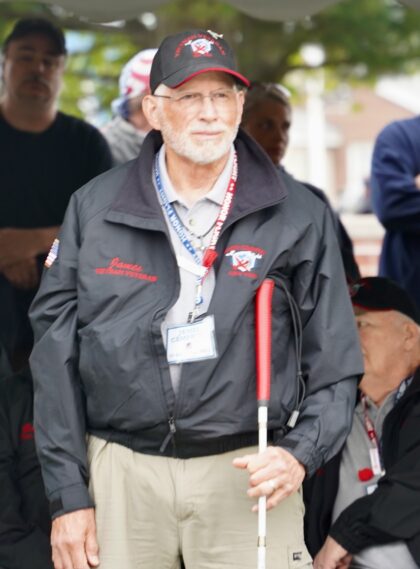 James “Jim” Campbell – US Air Force 1969-1974 Vietnam
James “Jim” Campbell – US Air Force 1969-1974 Vietnam
Jim enlisted in the US Air Force following college graduation in 1969 and was Commissioned as a 2nd Lt. He went on to complete Navigator and Navigator Bombardier training at Mather Air Force Base in 1970.
Assigned as a B-52 Navigator in Strategic Air Command, he would be posted to Fairchild Air Force Base, Spokane, Washington, in 1971. At the end of 1971, Jim would be deployed to Utapao Royal Thai Air Force Base in Thailand for combat missions to Vietnam.
Ironically, Jim would follow in his father’s war experience. His father flew B25 bombers into Southeast Asia from India during WWII, while Jim’s bomber would be the B52, had the numbers reversed.
Jim completed a rotating schedule of 520 days deployed, to include Anderson Air Force Base in Guam. He would fly 125 combat missions, including missions to Hanoi and Haiphong.
Jim was awarded the Distinguished Flying Cross for the mission to Haiphong in December 1972, during which he flew as wave lead Navigator.
For Jim, it was an honor to serve, and he attributes it as one of the best growth experiences of his life. He still maintains active friendships with fellow B-52 crew members.
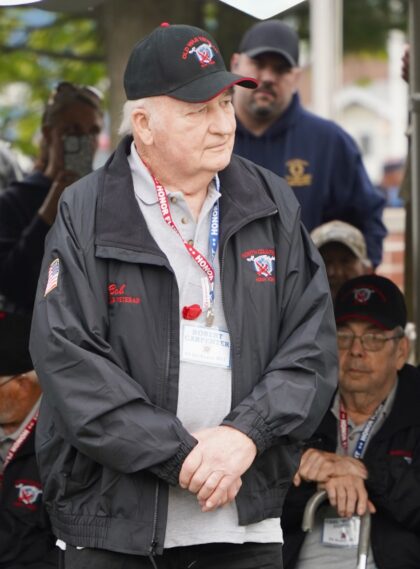 Robert Carpenter – US Air Force 1958-1962 Cold War
Robert Carpenter – US Air Force 1958-1962 Cold War
Robert, with his parents’ permission, would quit high school at 17 and enter the military. Just a few days from Christmas, Robert and three of his friends would head to Boston to enlist in the US Air Force. Headed to Lackland AFB, then on to Sheppard AFB, Robert would complete basic and AIT where he would receive 4 months of training as a Communications Teletype Specialist.
First stationed for 6 months at Westover AFB, Robert would receive orders for reassignment for 1 year to Ernest Harmon AFB, in Newfoundland. Wanting to get married, Robert would have to ask the commanding officer for permission. Robert would be asked, “Are you in heat? Or in love?” This love would require an assignment extension of an additional 6-months for his marriage approval to be granted.
Robert’s last assignment would take him to Homestead AFB, in Florida. Here he would join the 19th Bombardment Wing, until released from active duty in December 1962. As the closest air base during the Cuban Missile Crisis, the base was on high alert and ready to respond. He would be bivwacking as President Kennedy’s motorcade passed by. Robert expected that his service time would be extended, had the crisis not been averted.
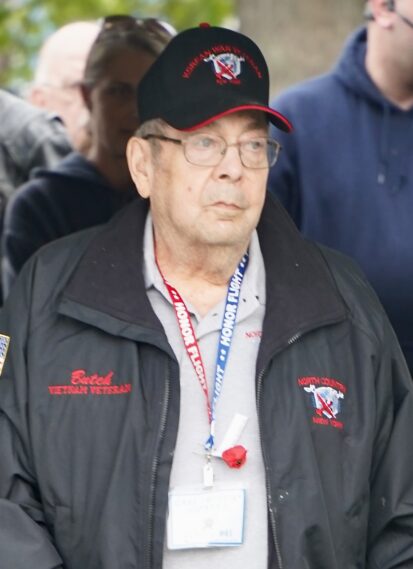 Carl “Butch” Gonyea – US Army 1969-1970 Vietnam
Carl “Butch” Gonyea – US Army 1969-1970 Vietnam
Carl would be drafted. His assignment to the US Army, as his branch of service, would be determined when they would go down the line, assigning three to the Army, and the 4th to the Marines. Riding down to boot camp to Fort Dix with a friend from school. Upon arrival, they would be separated.
On to AIT, Carl would receive 2-months of pioneer training in engineering and construction tasks at Fort Leonard Wood. Carl recalls his physical training Sergeant being a rough guy who liked push-ups between each training session.
Fourteen months of Carl’s service time was spent at Camp Peterson in South Korea. Out blasting stones on a road late in the day, the crew would set off a big blast, stones would go everywhere. Within 30-minutes, the not-so-happy Sergeant Major was there; the blast had taken the lights out in the mess hall.
Thinking back, Carl’s only regret is that he didn’t stay in the military. To this day, he still stays in contact with a fellow soldier living in Texas that he became friends with while stationed in South Korea.
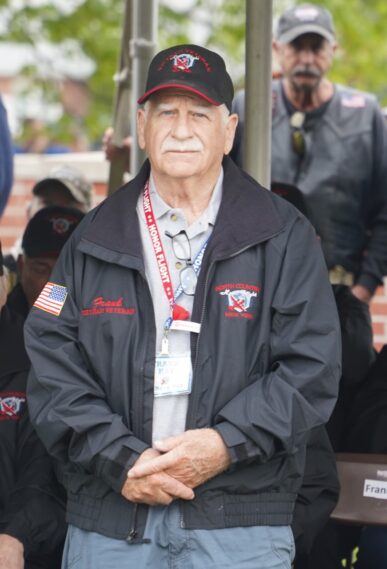 Frank Hay – US Navy 1966-1970 Vietnam
Frank Hay – US Navy 1966-1970 Vietnam
At the age of 18, most of the guys that Frank knew were headed to the Marines. He selected the US Navy as he thought this branch would allow greater travel opportunities. Frank would complete basic training and AIT at Great Lakes Naval Base. Completing radar school, he would make a request for the east coast and would receive his assignment on the west coast. In San Diego he would begin a 3-year assignment aboard the USS Galveston, a light-class cruiser containing nuclear weapons and a Marine contingency.
In Vietnam, they would spend months tracking planes off the coast. Frank would make a return trip home during this tour after receiving word that his father had a heart attack. He would fly back to Japan and return to ship off the Vietnamese coastal waters.
Seven months would be Frank’s longest stretch of time at sea. His memorable travels would take him to Barcelona, Hong Kong, through Europe and the Panama Canal, and a typhoon in Southeast Asia, with the sea breaking over 30–40 feet over the bridge.
He would make many good friends, and still fondly remembers his drive home from San Diego upon exit from the Navy. This journey home had him spending time at the North Rim of the Grand Canyon, Zion National Park, and the Painted Desert.
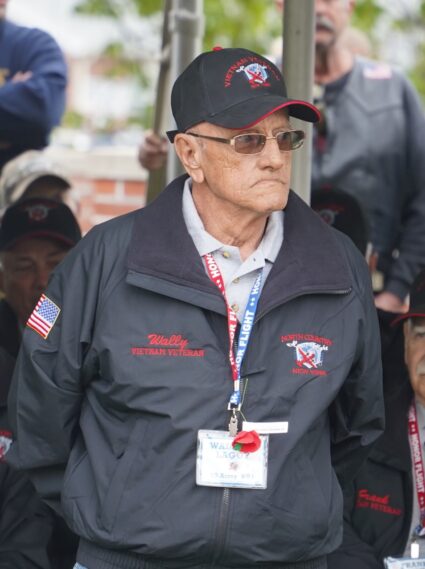 Wallace “Wally” LaGoy – US Army 1965-1967 Vietnam
Wallace “Wally” LaGoy – US Army 1965-1967 Vietnam
Drafted into the US Army. Wally would complete both basic training and AIT at Fort Dix. Receiving training as a wheel vehicle mechanic, the Army would never assign him as a mechanic.
They would pack up their gear, fly to Arizona and stay in a desert building with no windows for 7 hours before traveling on to California. Reaching port, they were lined up and randomly picked who stayed and who would continue on to Hawaii by ship. Wally, aboard a ship with 3000 troops, would sail by the Golden Gate Bridge and on to Hawaii. His travels would continue on to Japan and to Korea.
Wally would spend 1½ years in Korea. Here he would work in the motor pool assigned to drive the Lt Col, and to the military police. Wally would be thankful that he didn’t get called to be part of a jeep removal he witnessed. A PFC left the road and ended up in a waste hole channel. While in Korea, Wally would be called for TDY trips to Vietnam.
Discharged in California, he would return home with a nonstop flight to Kennedy Airport. Marking the occasion with a vodka shot, the surprising $10 price tag kept him at one. As with all veterans of this time, Wally would not encounter any warm welcomes or appreciation for his service.
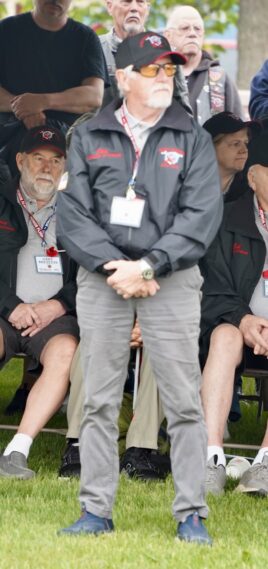 James Laird – US Army 1969-1972 Vietnam
James Laird – US Army 1969-1972 Vietnam
James would head to the recruiter’s office with two of his buddies. After being told to hand over his seat when a woman walked in, he would exit and go into the Army recruiter’s office to enlist.
With basic training and AIT completed at Fort Dix, James would be assigned an MOS 36K20 field wireman covering telephones, switch boards, and communications specialties. Much of his work would be learned as on-the-job training. Wiring electricity to gun sites, climbing poles for installation and repair, burying lines, and fixing hot wires in the rain. He would be blown back 10 feet when working with live electricity.
Sent to Vietnam, his first night in a foxhole with a grunt, a mongoose would present as a potential first casualty. Finding himself in the thick of action, James would be at Pleiku, Mang Yang Pass, LZ Action, Oh Khe Pass, Bon Son and Cam Ranh Bay. Some of James’ service decorations include the Vietnam Service Medal w/3 Bronze Stars, Republic of Vietnam Campaign Medal, Army Commendation Medal, and Cross of Gallantry w/Palm.
Adding to the stress of being away from home, James would learn of his mother being diagnosed with cancer, and also receive an unexpected Dear John letter from the girl he was expecting to marry.
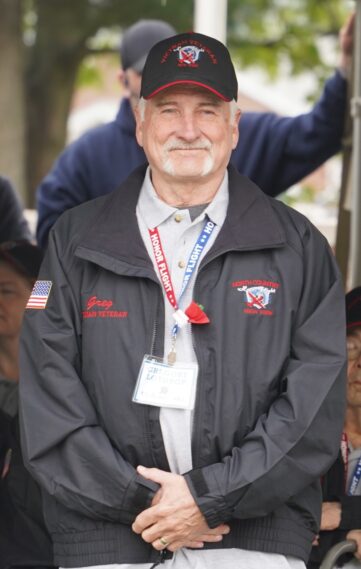 Gregory”Greg” Lothrop – US Army 1966-1969 Vietnam
Gregory”Greg” Lothrop – US Army 1966-1969 Vietnam
At the age of 20, Greg made the choice to enlist in the US Army, knowing that air or water was not a direction for him. He would report to Fort Bragg for basic training. This is where he would have his first experience with a rattlesnake. He quickly learned to keep his gear close and tight.
He would next move on to Fort Benjamin Harrison for AIT and an MOS assignment in finance. As one of fifteen newly trained to develop a new finance program, they would be sent to Fort Dix for set up.
The fifteen would later have a change to infantry duty, and receive jungle training. Greg would receive orders that would both be canceled, once for Germany and then for Vietnam. Of the fifteen, five would be shipped to Vietnam, one of which would not make it home.
Greg is proud that he had the opportunity to serve his country, but felt compelled not to mention his military service throughout most of his life due to the negativity of the Vietnam era. With a strong desire to provide service, he has continued on to life filled with a strong commitment to serving his community.
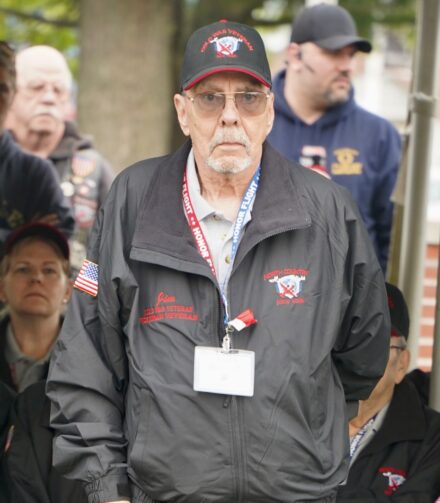 James “Jim” Miller – US Air Force 1969-1989 Vietnam/Cold War
James “Jim” Miller – US Air Force 1969-1989 Vietnam/Cold War
Not wanting to be drafted into the US Army, James opted to enlist in the US Air Force. He would complete basic training at Lackland AFB, then on to Shepard AFB to the office of special investigations for training in aircraft crash Investigation. His MOS for jet aircraft engines and as a tactical aircraft maintenance technician, Jim’s role was to gain an overall knowledge of aircraft in general to determine what went wrong at a crash site.
In his 20-years of service, he would be sent to Air Force bases across the globe: Otis, Seymour Johnson, Osan in South Korea, Mytle Beach, Zweibruchen in Germany, Mountain Home, Suwon in South Korea, and lastly, at Plattsburgh. While at these bases, he would receive training, investigate crashes, and work in aircraft maintenance, earning him many commendations and medals.
A couple of personal points of interest from Jim in his military travels include: slot machines at the base club in Korea, and when the train stopped in Germany you didn’t have to depart for a beer or for meat on a hook. When in Suwon, they sponsored an orphanage. He would use shoe polish on his face to entertain the kids as a clown. Although easy to put on, not as easy to take off, but definitely worth the time for the kids.
Jim feels honor, respect and loyalty are key to his service career, which he would do all over again. He continues his service as a member of the Honor Guard for Post #20 and a volunteer at Senior Planet.
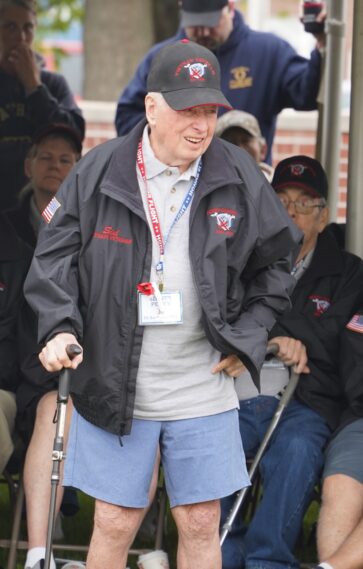 Sidney Perry – US Air Force 1963-1964 Vietnam
Sidney Perry – US Air Force 1963-1964 Vietnam
Sidney grew up in London during WWII. He remembers asking the Americans while in Enfield if they “Got any gum chum.”
Enlisting in the British Army, Sidney would serve in the Mill Hill Middlesex Regiment, stationed in Germany from 1953-1955 as a physical training officer. After his Army service, he would decide to leave England, taking the Queen May to Canada to find employment.
Not wanting to remain in either England or Canada, Sidney would relocate once again to the United States. Looking at being drafted as a non-citizen, he would choose to enlist in the US Air Force, as he had already “tried out” the Army.
He would be sent to Lackland AFB in 1963 for basic training, then on to Griffiss AFB 49th Fighter Interceptor Squadron, with a specialty as an Apprentice Operations Control Specialist. He would be working in the command post hot room when President Kennedy was assassinated.
Without family nearby, Sidney would volunteer to work all the weekend, night, and holiday shifts that no one wanted. As the base was looking to cut down on shifts, Sidney figured out that he just needed to look like he was performing an important task, so he would carry around an empty box that needed to be delivered. No one bothered him, he was on an important delivery mission.
Sidney would occasionally get asked to make supply runs to Plattsburgh. Strapping him into the jump seat, they would give him the Major’s helmet. Arriving at base, he wondered why he was being addressed as Major, until he realized that it was written on the helmet he was wearing.
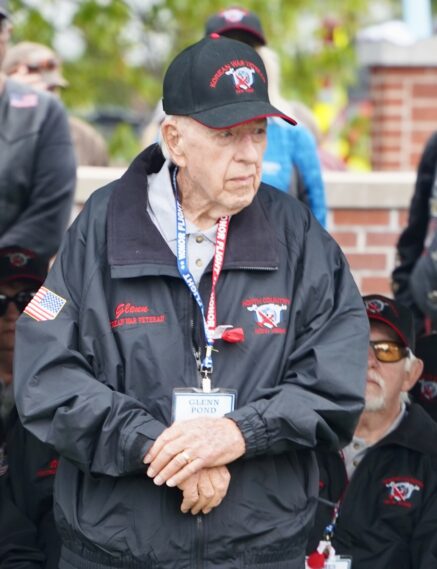 Glenn Pond – US Air Force 1953-1957 Korean War
Glenn Pond – US Air Force 1953-1957 Korean War
Not wishing to be drafted, Glenn would enlist in the US Air Force at age 19. He would begin his time in the military at Sampson AFB, and receive advanced training as an airborne radio operator at Keesler AFB. After graduating from high school at 17, Glenn would go to work for the Railroad as a telegraph operator. His knowledge of the railroad Morris Code allowed him a fast transition to international coding.
Glenn’s first assignment would take him to Donaldson AFB, flying in the C119 Flying Boxcars. There was a row of trees at the end of the runway. Glenn always had concerns that they would not make it over the top of them. They would fly to pick up the 82nd Airborne Division parachute division at Fort Bragg.
Glenn would serve 6 months at Kimpo AFB in South Korea. Here they would land in every possible location, even the beach. They would also fly Army soldiers on the C-47 to Japan’s Ashiya Air Field. Transferring to Tachikawa Airfield in Japan, Glenn would be a radio operator on the C-54.
Back in the states, Glenn would serve at Whiteman AFB SAC base. Here they would be performing air refueling for the KC-129. Hungarian hostilities in Greenland had Glenn on the ready for a B-47 refueling crew.
Glenn has never regretted his time in the Air Force. It gave him the opportunity to travel the world, and the GI bill allowed him to pursue an education and a fulfilling career teaching Biology.
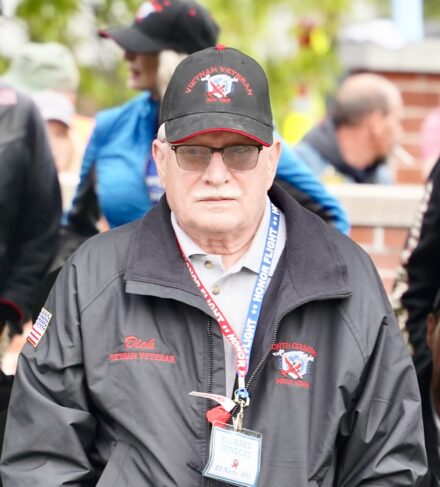 Richard “Dick” Senecal – US Navy 1967-1969 Vietnam
Richard “Dick” Senecal – US Navy 1967-1969 Vietnam
Dick would choose to serve his country just like his brothers. His brothers would choose the Army and the National Guard. Dick would enlist in the Navy SeaBees. In November 1967, he left for Gulfport Naval Base for basic training, then on to Oxnard, California for 6-months of advanced training with an MOS of Utilitiesman. His specialty would be plumbing and heating.
Landing in Da Nang, Vietnam, Dick would meet up with his already deployed mobile construction battalion, Alpha Co. Here he would serve his first 4 months as security. His service would be true to the Seabee motto “We build, we fight.” The next 6 months would be spent in plumbing and heating construction which earned him a Vietnam Service Medal with Fleet Marine Force Combat Operations Ribbon.
New orders would have him shipped back to California, to the Marine base, Camp Pendleton. Here Dick would receive advanced military training, including machine gunner, and rifle and pistol training. After the completion of this training, he would complete the remainder of his service commitment with an additional 7 months of service in Okinawa.
Like other miliary service people of this war, Dick remembers the unwelcoming return he would receive when returning home from his country. Today we give him and all others who served during Vietnam, both home and abroad, a proper thank you, and the welcome they deserve.
Dick is making his journey today with his son Rick, an Army veteran.
Posted: May 18th, 2025 under Adirondack Region News, City News, Community Events, General News, Honor Flights, National News, Northern NY News, Peru/Regional History, Veterans' News.
